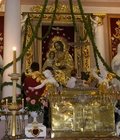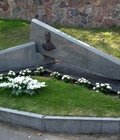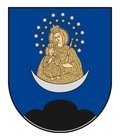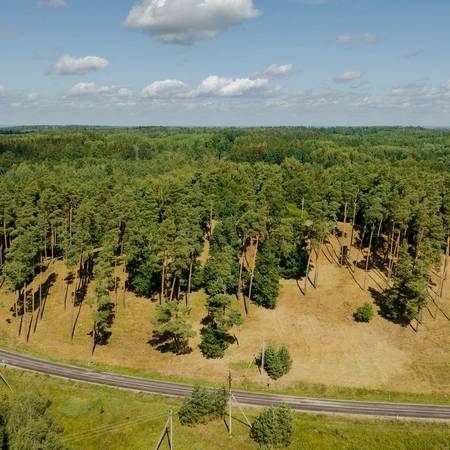Pivašiūnai is situated in a picturesque hilly location, close to a large Pivašiūnai–Gineitiškės forest and Lake Ilgis.
There are two opinions regarding the origin of the name of Pivašiūnai. The first opinion holds that the name of Pivašiūnai originates from the name of the river Pievesa. The legend about this small river has it that long ago the river was swift and deep. During the times of fights with Teutonic Knights, Lithuanian soldiers and commanders would stop here for some rest and in order to water their horses – and they would look for more shallow places to cross the river. The swift torrent could even carry away a horseman with armour and the horse. Only the bravest ones were able to overcome this obstacle.
While others say that the name of Pivašiūnai originates from a personal name – the Polish name Piwosz (Lithuanian: Pivašius). Such was the answer in 1921 to a teacher of a primary school of Pivašiūnai from linguist Kazimieras Būga, when the teacher asked whether it was possible to derive the name of Pivašiūnai from the words “pieva” (a meadow) and “šienas” (hay).
In the written sources, Pivašiūnai has been mentioned since the 17th century, however, various signs (for instance, barrows located close to Pivašiūnai) show that people lived here much earlier than that. In 1630, a wooden church was built next to the settlement, and the supporter of the church Jonas Klockis, before his death, left the church and the surrounding lands by his will to the Benedictine monastery of Trakai. The monks were the owners here for almost two centuries: they expanded the town and had three smitheries and a brick-works, they also set up a few taverns. This region has become most of all famous because of a painting of the Blessed Virgin Mary brought by J. Klockis from abroad. The painting did not suffer during the wars and fires, and in the 17th century, the church authorities recognised it as miraculous. It is said that, by its miraculous power and age, the painting equals that of the Gate of Dawn. Therefore, it is not surprising that Pivašiūnai is called Šiluva of southern Lithuania – and the Assumption feast here attracts thousands of pilgrims from the entire Lithuania and abroad. This painting is also included into the coat of arms of Pivašiūnai approved by the President’s decree dated 24 May 2006. On the blue background of the coat of arms, symbolising the sky and spiritual peace, there is a golden painting of the Blessed Virgin Mary with Child of Pivašiūnai on a recumbent silver crescent with its points upward, while at the top the painting is surrounded with 12 smaller golden and 12 larger silver hexagonal stars, and at the foot there are three black heraldic mountains. They symbolise the hills of the church, the school and the mound.
In 1905, a primary school was opened in the town with two teachers working there. During the two world wars, Pivašiūnai had a post office, a police office, a forestry office, a mill, a sawmill, later on also a coffee-shop and shop in one, a dairy, there was even a small bank here.
Today Pivašiūnai is the centre of the ward. It willingly accepts pilgrims and curious travellers. Here, you can find not only recreation and spiritual peace, but also spend your time resourcefully and pleasantly at the Craft Centre of Pivašiūnai or in the recreation zone next to Lake Ilgis.
On the ward’s territory, a geo-morphological reserve of Pivašiūnai was established.
The Church of the Assumption of the Blessed Virgin Mary. The church was built in 1825 and is wooden. This church is the most famous one in the region of Alytus and the only church of the Classicism style in Lithuania which has preserved the special structure of the Latin cross characterised by the dynamics of longitudinal volumes and the crosspiece. Next to the church, there is a wooden belfry. In 1929, in a children’s newspaper “Žiburėlis”, a pupil from Pivašiūnai wrote: “The church of Pivašiūnai has been built in a very beautiful place, on a high mountain (171 metres), which is covered with wide pine-trees, birches, maples and other trees as well as full of crosses.” Inside the church, you will find a walk-around altar, which is rare in Lithuania. On the altar, there is a miraculous painting of the Blessed Virgin Mary. In 1988, cardinal Vincentas Sladkevičius crowned the Virgin with Child of Pivašiūnai with crowns gifted by Pope John Paul II and granted her the title of the Comfort of the Sorrowful. An impressive part of the interior – 15 wooden sculptures painted in white and decorated with gold. Pivašiūnai has long been famous for its Assumption feast that takes place for the whole week. On those days, this place attracts thousands of pilgrims from all over Lithuania and abroad. The church of Pivašiūnai is one of the objects of the pilgrim road of John Paul II in Lithuania (www.piligrimukelias.lt). In the cemetery next to the church, there are quite a number of valuable ancient tombs.
The complex of buildings of the Church of the Assumption of the Blessed Virgin Mary (a church, the fence of the cemetery with a gate, a chapel, an old presbytery, its two barns, an ice-house and a farm building as well as a monumental cross) has been included into the Register of Immovable Cultural Assets.
Next to the church’s belfry, there is a sculpture of the Blessed Virgin Mary with infant Jesus created by artist Leokadija Belvertaitė in 1945–1948.
On the slope, close to the staircase leading to the church of Pivašiūnai, there are Stations of the Joyful Mysteries of the Rosary (author Algirdas Judickas, 1988).
A chapel-mausoleum of the Odinių (Odinčių) family. Not far from the church, on the other side of the street, in the old cemetery which has already been built with houses now, on the site of the old church, this chapel-mausoleum was constructed in the middle of the 19th century.
The town is embellished with a monument opened in 2006 during the Assumption feast in memory of priest Alfonsas Petrulis, a member of the Council of Lithuania and a signatory to the Act of Independence of 16 February 1918, who worked as a parish priest in the church of Pivašiūnai in 1911–1927.
The Pivašiūnai mound’s (GPS N 54° 27ʹ 38.9ʺ E 24° 22ʹ 09.2ʺ) legend has it that in the old days there was a temple on this mound, and at that time the mound was not so high. People would come here to pray and would bring a hat full of land, that is how they made this mound. The legend further has it that the mound of Pivašiūnai belonged to a son of the duke of Pilėnai, Margis. Therefore, the brave duke is said to have been buried on the mound.
The mound dates back to the 1st millennium. An excellent panorama of the mound opens up from the churchyard.
Bazorai mound (GPS N 54° 26ʹ 07.7ʺ E 24° 09ʹ 04.3ʺ) is on a separate hill, on the left bank of Punelė, in Bazorai village. The top field is oval and oblong in form, while the slopes are of average steepness. For a long time, the mound has been ravaged: the top field has been ploughed, and gravel has been excavated on the southern slope. At the foot of the mound, there was a settlement. East of the mound, there is a necropolis, and old people used to tell that some giants were buried there, therefore, people would not plough the land there.
The mound dates back to the 1st millennium. It is hard to find.
Einoronys mound (GPS N 54° 26ʹ 39.5ʺ E 24° 23ʹ 27.5ʺ), which is also called the Castle Mountain, has been installed on the hill dominating the surroundings of Einoronys village. The top field is oval and oblong in form, while the slopes are quite steep, about 20 metres high. The mound has been eroded by ploughing and by the triangulation tower which used to stand there on the northern part of the top field. In 2001, a small area of the field was explored. Lined ceramics and flint articles have been found. The findings date back to the Stone Age and the Bronze Age.
The mound dates back to the 1st millennium before Christ – the beginning of the 1st millennium. It is hard to find.
Lake Ilgis (Long) with the hills of Skrynia (Chest) and Muzika (Music). It is told that very long ago there was a plain here – meadows with a few small islands and hills. On one of the hills, there was a pagan altar with a sacred fire, while the altar was surrounded by huge oak forests. When Christian monks came to this region and, having built a church on one of the hills, started despising pagans, pagan priests cursed them saying: “Let there be a lake here, as long as a meadow-covered plain.” Then suddenly, the land trembled and everything started sinking, including the church with a bell which rang while it sank. The plain was flooded with water – in this way, Lake Ilgis appeared. Those, who did not have enough time to escape, sank together with the land. A young woman Vaičiukutė remained alive, and she was supposed to marry hero Gulbinas, however, her dowry was lost in the waves. She cried ruefully on the bank of the lake, until the waves brought her dowry chest back, while she heard her mother’s voice from the big island: “Take your dowry and stop sobbing.” The woman took the dowry, but left the chest in the lake close to the hill, which was named Skrynia. Hero Gulbinas and his beloved celebrated their wedding on the hill located on the opposite bank of the lake. The banquet lasted one or two weeks, while musicians replaced one another and played all the time. One of them even started living here and would play on the top of the hill until midnight, entertaining the castle’s defenders and mourning the perished. This is how that hill was called Muzika Hill. Today, the feast of Assumption is celebrated every year on those hills.
Next to Lake Ilgis, there is a recreation zone with a beach, a sports field with basketball boards of regulated height, lighting, installed paths, a bridge to the lake, dressing cabins and gazebos.
The cross marking the place of the old cemetery of Junčionys village stands on the territory of this village, not far from the main road. The territory of the former cemetery has been included into the Register of Immovable Cultural Assets.
The place of fight and death of Lithuanian guerrillas – Žemaitėliai village, Pivašiūnai ward, Alytus district. In this place, in a forest bunker, following the betrayal by MGB agents (Kostas Kubilinskas and Algirdas Skinkis), four guerrillas of Kazimieraitis detachment of Dainava county perished in a fight with riflemen’s regiment No 34 of the internal army of MGB on 7 March 1949. On the memorial plaque, it is written: V. Voveris-Žaibas – detachment commander, P. Šilanskas-Labutis – group commander, V. Kazlauskas-Vanagas – staff commander and J. Kazlauskas-Šermukšnis – platoon commander.
Jewish genocide cemetery of Klydžionys village. In 1941, in Klydžionys village, people of Jewish nationality were killed in two places. They were buried in mass burial places 600 metres apart. In one of the burial places, a monument has been erected. One cemetery is located in Pivašiūnai ward, while the other – in Butrimonys ward.
In Sudvariškės village, you can visit and see: a wooden cross with the artistic value of Dzūkija ethnographic region, the first old cemetery called Prancūzkapis (The French Cemetery) (you can still hear that Napoleon’s soldiers were buried here, however, few believe that), the second old cemetery called Kapinėlės and Sudvariškės barrows. All those objects have been included into the Register of Immovable Cultural Assets. They are hard to find.
Authors of photographs: G. Bernatavičius, B. Malaškevičiūtė, A. Purvinytė, Z. Stankevičienė, archive of Alytus Tourism Information Centre.











Reviews